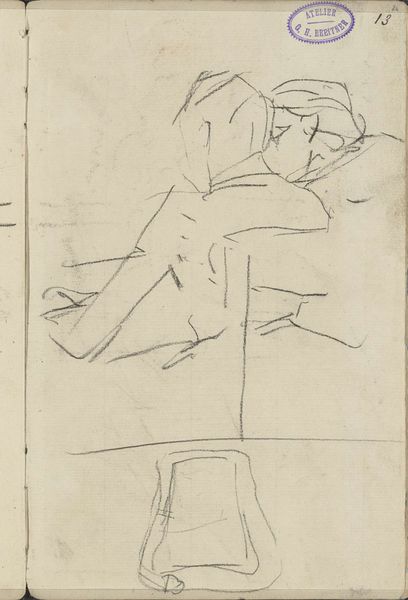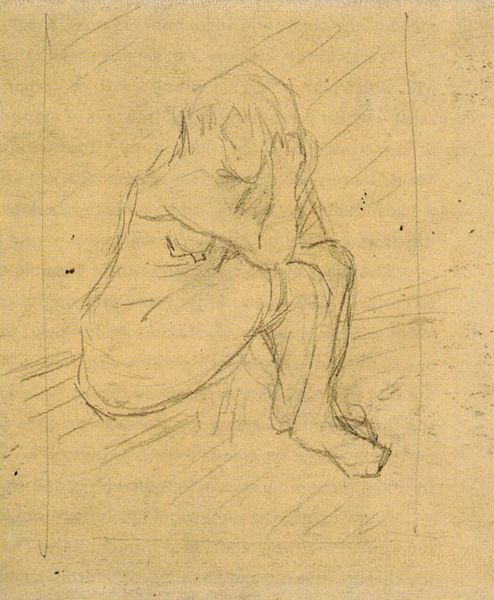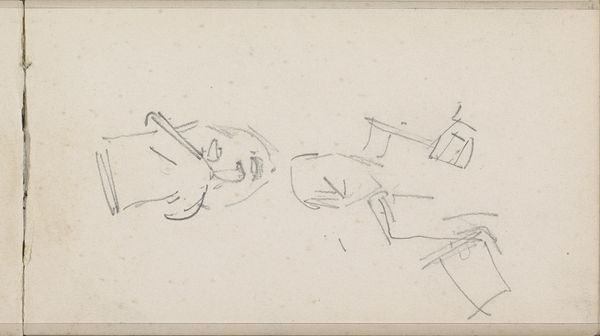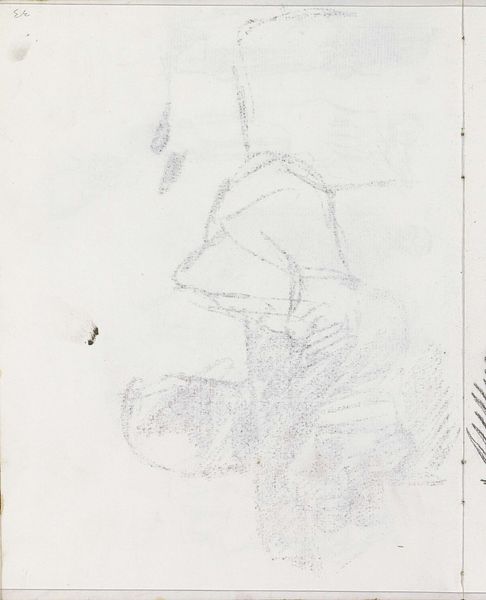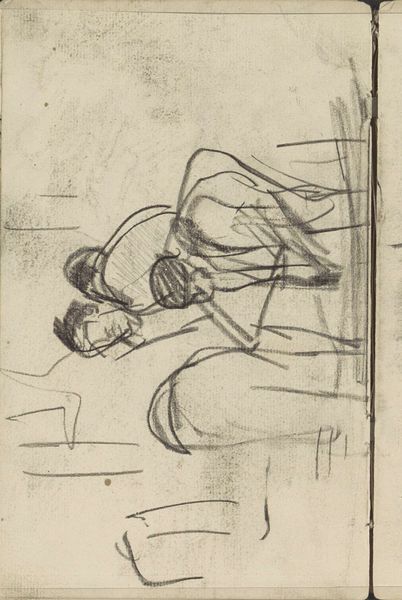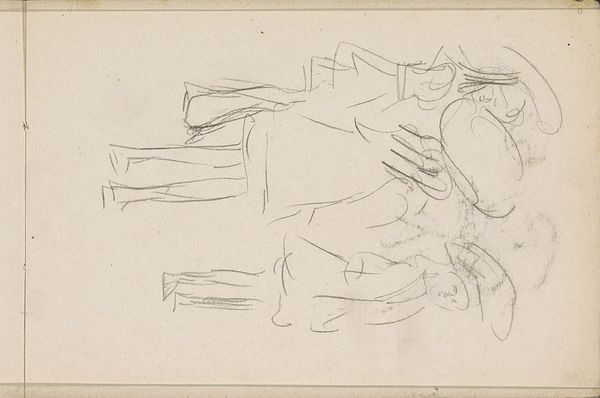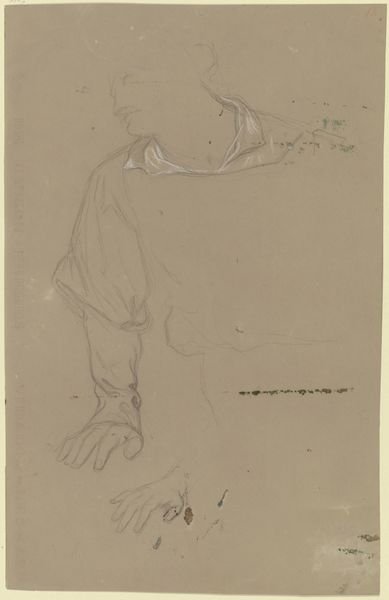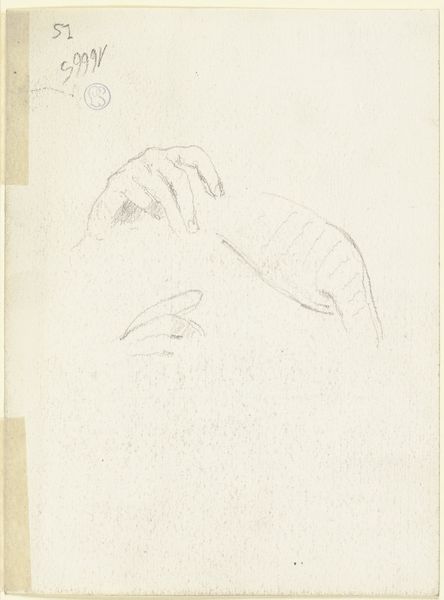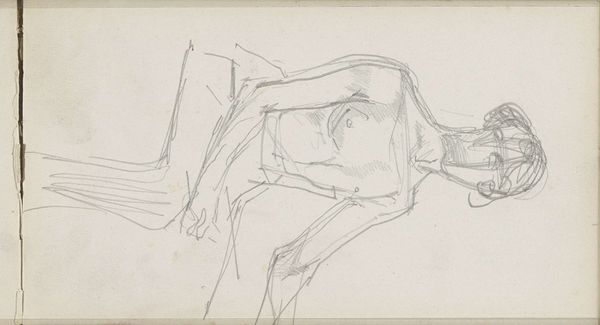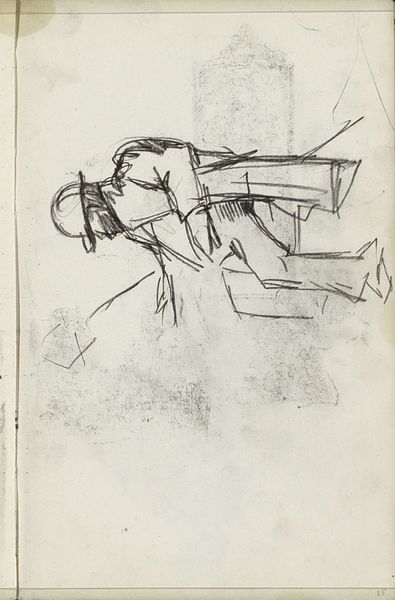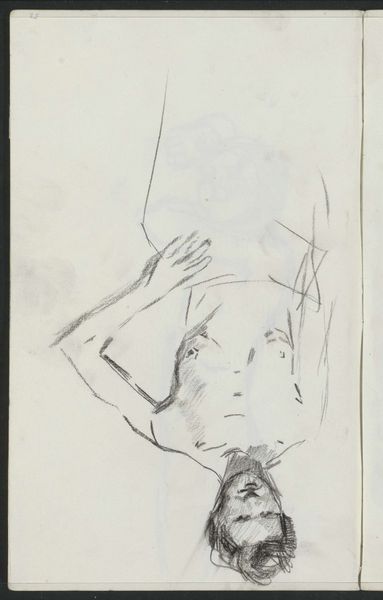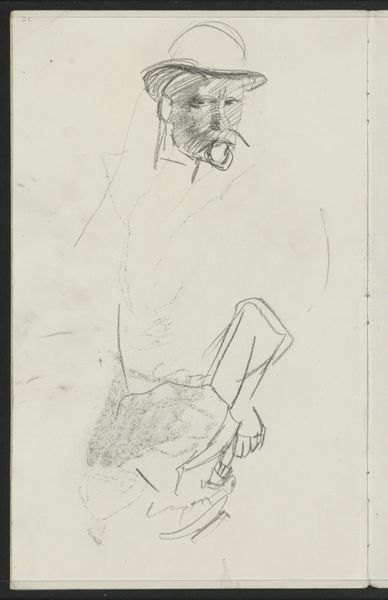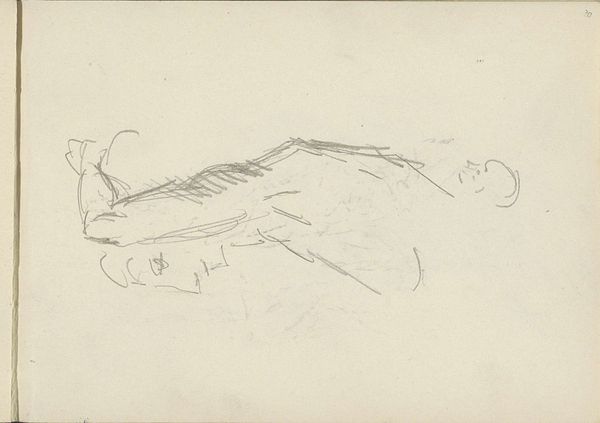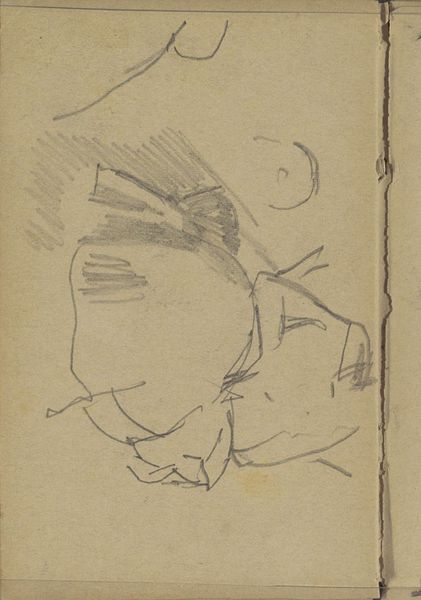
Dimensions: height 135 mm, width 105 mm
Copyright: Rijks Museum: Open Domain
Curator: Here we see George Hendrik Breitner's pencil drawing on paper, “Naar beneden kijkende figuur,” made sometime between 1886 and 1923. It’s part of the Rijksmuseum’s collection. Editor: My first impression is a feeling of quiet contemplation, a private moment almost captured illicitly. The minimal lines create a sense of immediacy and intimacy. Curator: Breitner’s work often documented everyday life in Amsterdam, yet he also had a keen interest in capturing figures in motion, particularly women. His unflinching look at the subject's world engages in the complicated social discourse of the Gilded Age, the period of increased labor migration in Western Europe. How does this simple sketch work as social commentary? Editor: It's fascinating you bring that up. The downcast gaze can be interpreted in several ways, referencing women's agency in response to increasing demands. But I think we must contextualize the time when this sketch was conceived, placing it within the lens of prevailing norms of artistic representation that celebrated primarily affluent lifestyles. Here, the absence of clear facial features encourages a projection, almost inviting the viewer to occupy the subject's introspective stance. It highlights an ordinary experience as the center stage of life in Holland. Curator: Exactly! Considering how institutional art histories traditionally sideline or completely overlook narratives of the working class, Breitner’s choice to center the figure adds further meaning. What sort of intersectional dialogues should be at the forefront in this circumstance? Editor: This approach underscores the public role of museums as not just repositories of objects but as spaces for dialogue about social issues reflected in these artifacts, offering diverse insights into historical realities. The drawing’s loose rendering also captures a sense of transient movement, that perhaps she may rise from such gaze soon, pushing forth change in a time where women lacked socio-political representation. Curator: It's important to continue analyzing the artist's choices regarding form and subject, not only enriching our engagement but broadening an intersectional awareness in today's context. Editor: I agree. It underscores that historical figures' actions always existed within complex intersections of agency, expectation, and material conditions, with lasting implications.
Comments
No comments
Be the first to comment and join the conversation on the ultimate creative platform.
